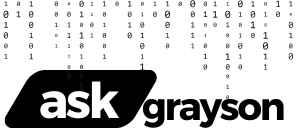Are you looking to write custom Python scripts on Windows using GitHub Desktop? This guide will show you all the steps you need to take to begin creating your own Python scripts right on your Windows operating system.
Python is a programming language used for running scripts. It is popular for everything from building websites and automating manual tasks to game development and data analysis. Once you understand the basics, you can use Python for a wide variety of uses.
GitHub Desktop is software used by developers to sync their code with a repository. With this, you can track edits and changes, collaborate with other developers, and store your code in a version control system.
In this guide, we will cover the following topics:
– What is Python?
– What are the Benefits of Using Python
– What is GitHub Desktop?
– Installing Python and GitHub Desktop
– Setting Up Python in GitHub Desktop
– Using GitHub Desktop to Create Python Scripts
What is Python?
Python has become one of the most popular programming languages over the years. It is an interpreted, object-oriented language designed to make the development process quick and easy. It is used for everything from data analysis to game development to web development.
What are the Benefits of Using Python?
Python is known for being user-friendly and versatile. It is open source, so users can easily customize and improve the code. Additionally, Python is fast and efficient, meaning you can quickly build reliable applications.
What is GitHub Desktop?
GitHub Desktop is a desktop client that allows developers to sync their code with a repository. It helps you keep track of changes and collaborate with other developers, as well as store code in a version control system.
Installing Python and GitHub Desktop
Before you start creating Python scripts, you need to install both Python and GitHub Desktop. You can find both of these applications on the official website or download them directly from the Microsoft Store. Once they’re installed, you’re ready to start creating scripts.
Setting Up Python in GitHub Desktop
Now that you’ve installed both Python and GitHub Desktop, you’ll need to configure them both in order to begin writing Python scripts. You can do this by opening up the GitHub Desktop Settings and linking the two applications together.
Once you’ve done this, it’s time to start writing scripts.
Using GitHub Desktop to Create Python Scripts
Now that you’ve got everything set up, you can begin creating Python scripts with GitHub Desktop. To do this, you’ll need to create a GitHub repository. You can do this by clicking on the “Create Repository” button in GitHub Desktop and adding a name to your project. Once the repository is created, you can begin writing your scripts.
Simply use the text editor within GitHub Desktop to write your Python scripts. As you type, you’ll be able to use the version control feature to track your changes and collaborate with other developers. You can also use this feature to back up and share your scripts.
It’s quite simple
Writing Python scripts on Windows using GitHub Desktop is quite simple after reading this guide. You can easily install both Python and GitHub Desktop, and then link them together to begin writing scripts. You can then use the version control feature in GitHub Desktop to track changes, collaborate with other developers, and share your scripts.
If you’re looking to master Python programming and other coding languages, don’t forget to subscribe to our awesome newsletter to get the best tips and tricks delivered to your inbox.
